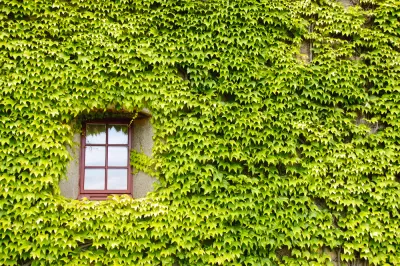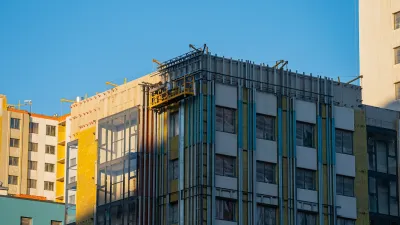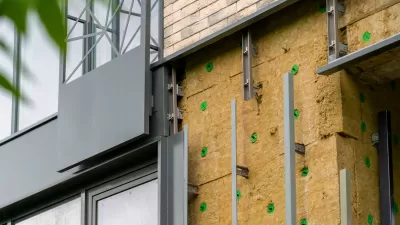Which is better for the environment: buying an existing home, inefficiencies and all, or paying to build a new home with all the bells and whistles of green building technology?

As the world's human population grows, we're taking a bigger and bigger toll on the environment.
All those people need somewhere to live, and every home uses up land, energy, building materials, and other resources.
As people seek ways to reduce the environmental impact of their homes, they explore a number of different strategies. Green building trends are sweeping the nation, but many wonder if it's eco-friendlier to build a new home or buy and possibly renovate an older one.
The answer is it depends on the attributes of the home you would buy, build, or renovate.
In most cases, though, buying something that's already in existence is greener than building something new, because most, if not all, of the materials are already sourced.
The Waste Hierarchy
Buildings, which account for 38% of the world's carbon dioxide emissions and 40% of the raw materials we use, fit into the waste hierarchy we use for everything else. You may know this as "reduce, reuse, recycle," but it can also be split up into more specific categories. In order of most environmentally friendly to least, the waste hierarchy looks like this:
- Prevention
- Reduction
- Reuse
- Material Recovery (recycling, etc.)
- Energy Recovery
- Disposal
Buying a new home falls into the reuse category. Even if you complete significant remodeling, you will still be reducing the demand for new resources. When you use materials that are already in use, you eliminate the need for new.
It is possible, though, that building and living in a new home could be greener than an old home in the long-term if you take care to make the house environmentally friendly and energy efficient.
Building
Buying an existing home will usually be greener in the short-term, but that might not hold true in the long-term, depending on the characteristics of the building.
This may be especially true if you build and live in a new home that uses minimal energy and renewable energy as well as sustainable and recycled materials. Living in that home would likely be greener over the long-term than living in an already existing house that runs on fossil fuels, is not energy efficient, and needs repairs that require unsustainable materials.
If you're looking to build a new green home, the United States Green Building Council has a lot of valuable resources and also offers Leadership in Energy and Environmental Design, or LEED, certification.
Buying
Buying an older home has an immediate advantage over building a new one in terms of eco-friendliness because you don't need to source new materials.
This prevents the destruction of natural areas and resources as well as the disposal of materials currently in use in buildings.
Buying a home also has economic advantages over building one.
It typically costs less, takes much less time and is more convenient. Rather than coordinate all the contractors, permits, and resources you need for the project, you can simply search online for homes for sale and visit open houses — you can even bid on real estate auctions online.
However, depending on the state of the home you purchase, it might have an environmental downside. Older homes might not be energy-efficient or be set up to conserve water and other resources.
Remodeling
To get the best of both worlds, more eco-conscious residents are opting to buy older homes and retrofit them to make them greener. This avoids the sourcing and use of entirely new materials, but it also allows you to incorporate some of the modern, green technologies that can reduce a home's environmental impact. In fact, 43% of respondents in a recent survey of U.S. housing industry professionals said they expect to work on a green building retrofit in the next three years.
If you're looking for a new place to live and want to keep it environmentally friendly, aim to use as few new resources as possible in the short-term, but also balance that with resource use in the long-term. For instance, some investments, such as improving energy efficiency or installing solar panels, may reduce energy use in the long-term, making the initial resource use worth it.
You should try to use existing resources as a base, though, which is why buying an older home and making any necessary upgrades is a green choice.
Purchasing an already-completed green home would be ideal, but if that's not an option, try buying an older home and retrofitting it to optimize energy use and sustainability.

Planetizen Federal Action Tracker
A weekly monitor of how Trump’s orders and actions are impacting planners and planning in America.

Maui's Vacation Rental Debate Turns Ugly
Verbal attacks, misinformation campaigns and fistfights plague a high-stakes debate to convert thousands of vacation rentals into long-term housing.

San Francisco Suspends Traffic Calming Amidst Record Deaths
Citing “a challenging fiscal landscape,” the city will cease the program on the heels of 42 traffic deaths, including 24 pedestrians.

Amtrak Rolls Out New Orleans to Alabama “Mardi Gras” Train
The new service will operate morning and evening departures between Mobile and New Orleans.

The Subversive Car-Free Guide to Trump's Great American Road Trip
Car-free ways to access Chicagoland’s best tourist attractions.

San Antonio and Austin are Fusing Into one Massive Megaregion
The region spanning the two central Texas cities is growing fast, posing challenges for local infrastructure and water supplies.
Urban Design for Planners 1: Software Tools
This six-course series explores essential urban design concepts using open source software and equips planners with the tools they need to participate fully in the urban design process.
Planning for Universal Design
Learn the tools for implementing Universal Design in planning regulations.
Heyer Gruel & Associates PA
JM Goldson LLC
Custer County Colorado
City of Camden Redevelopment Agency
City of Astoria
Transportation Research & Education Center (TREC) at Portland State University
Jefferson Parish Government
Camden Redevelopment Agency
City of Claremont






























